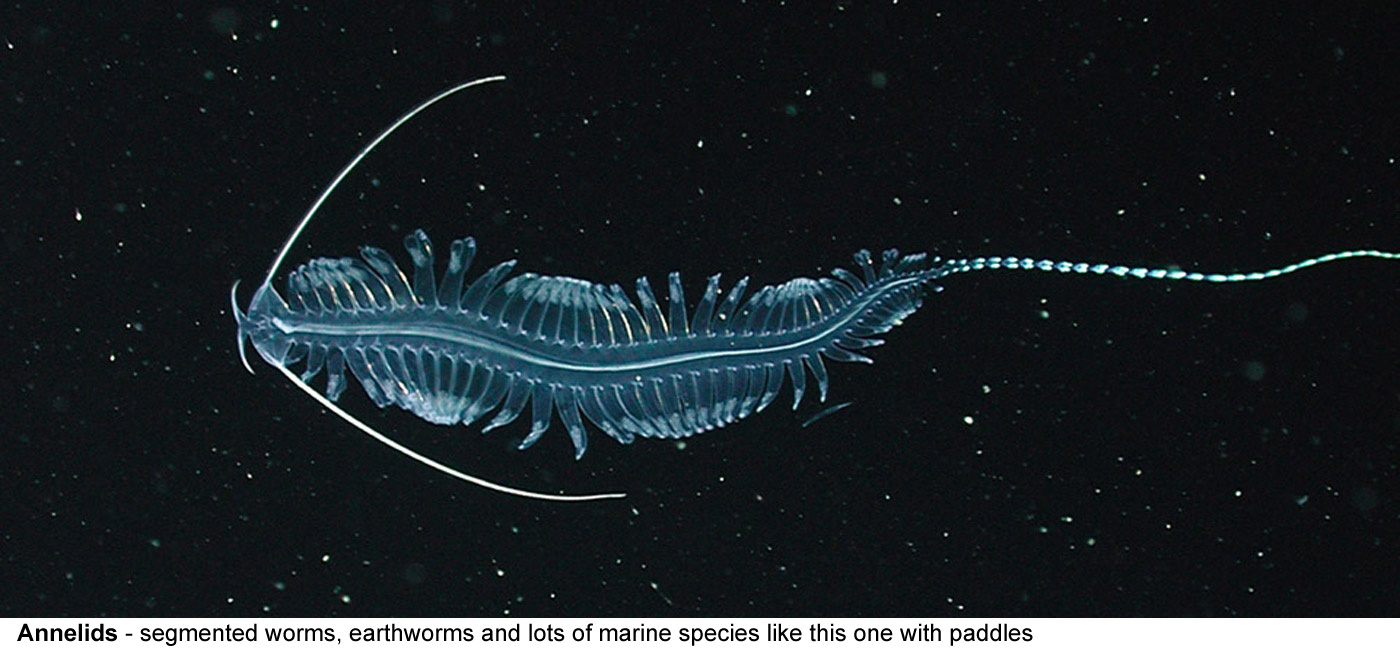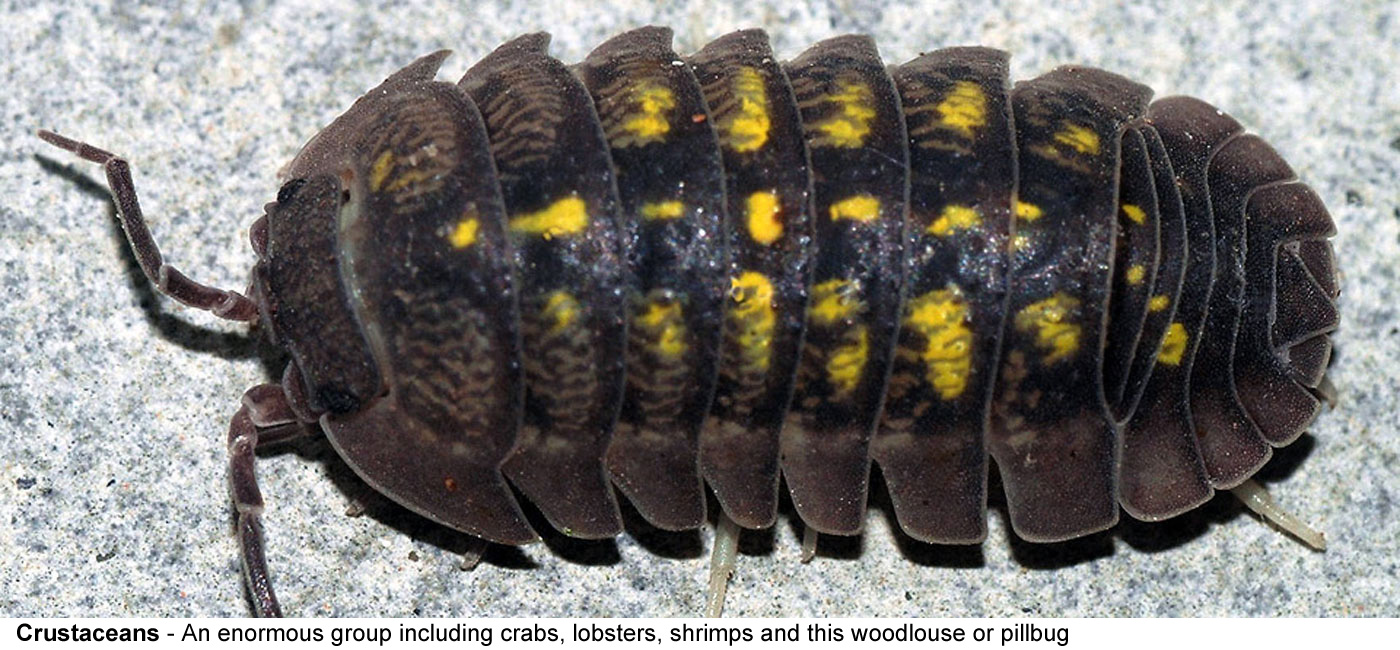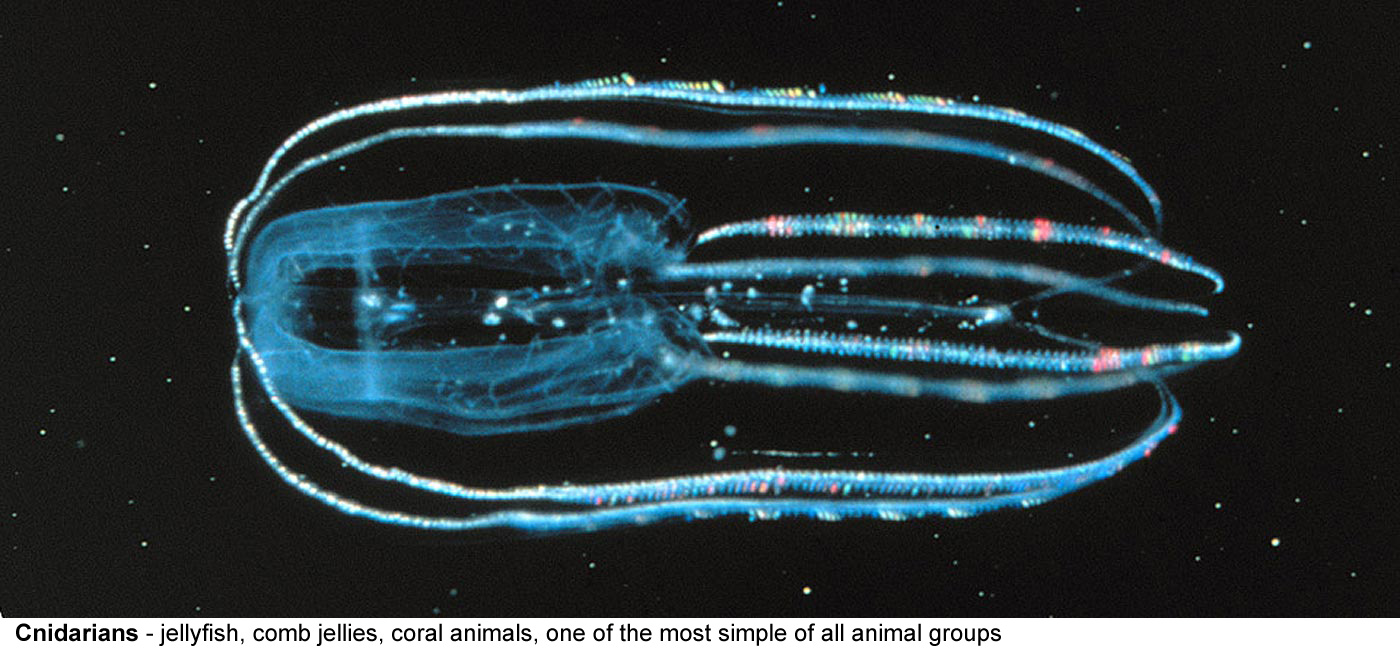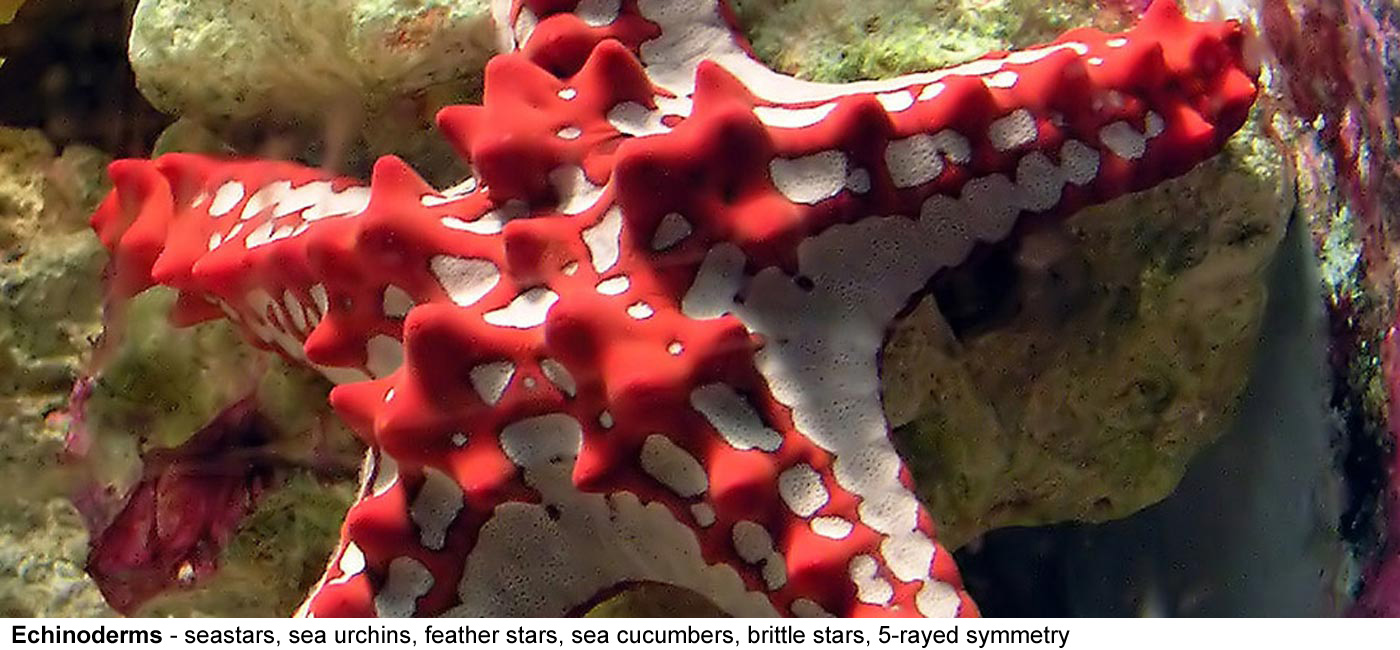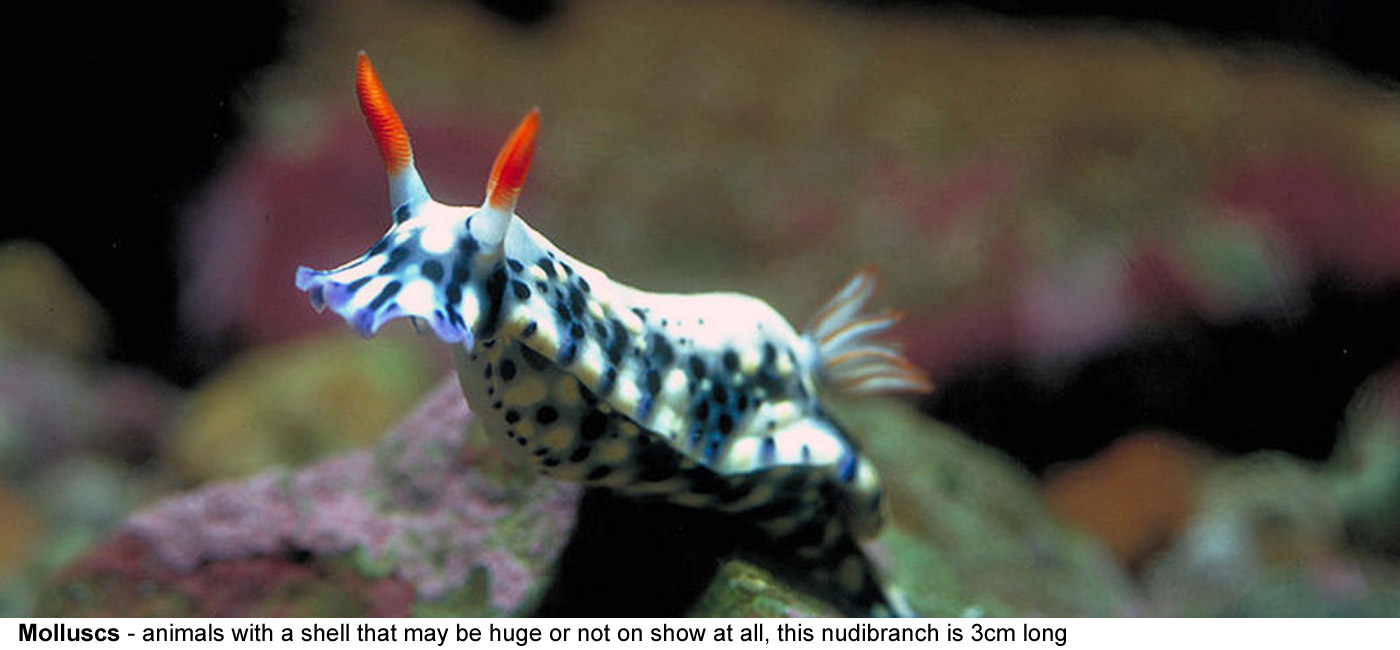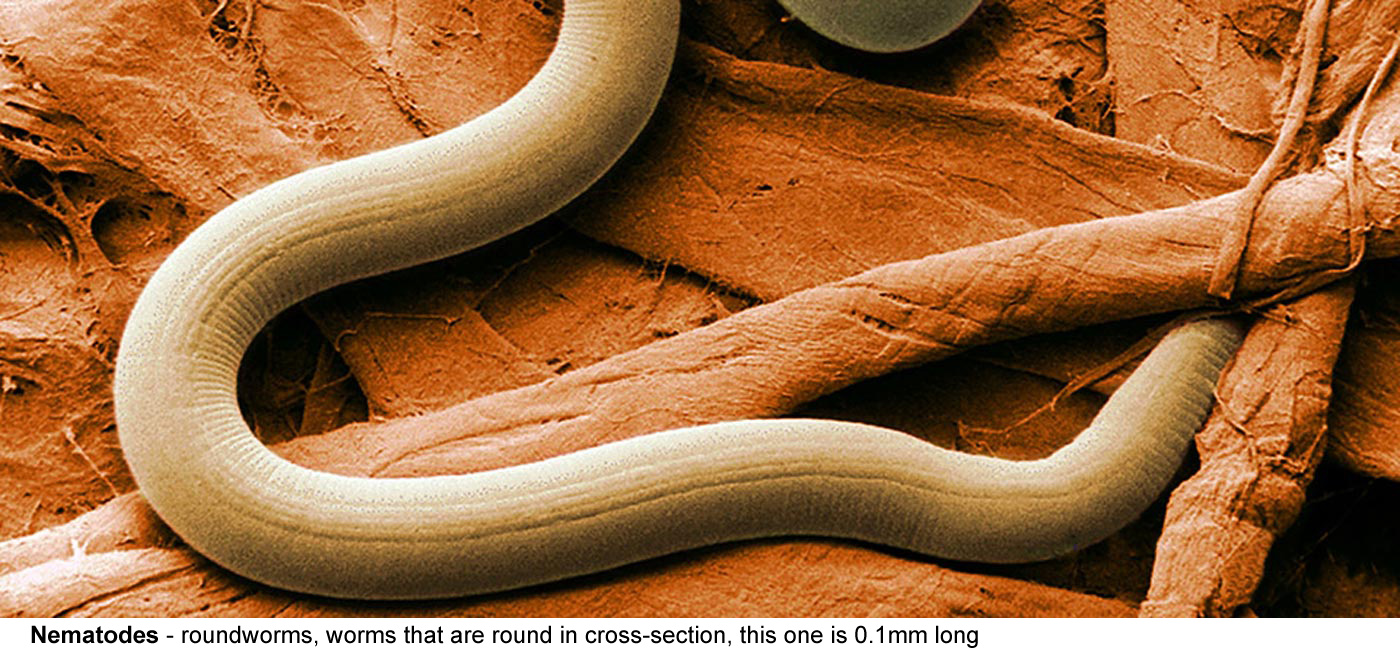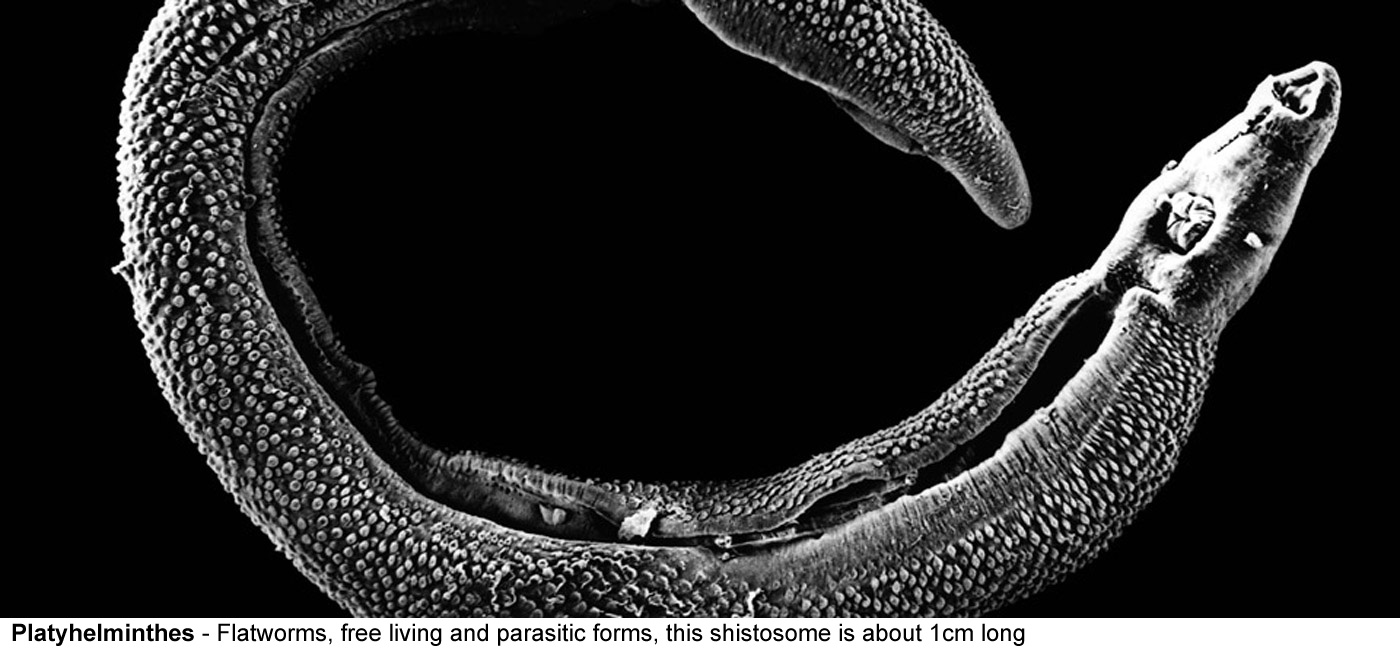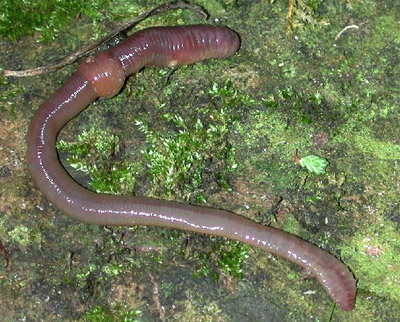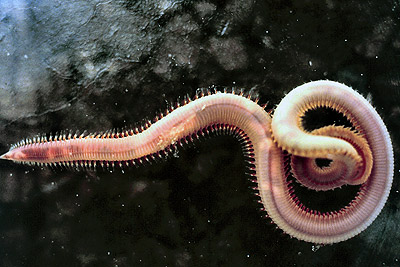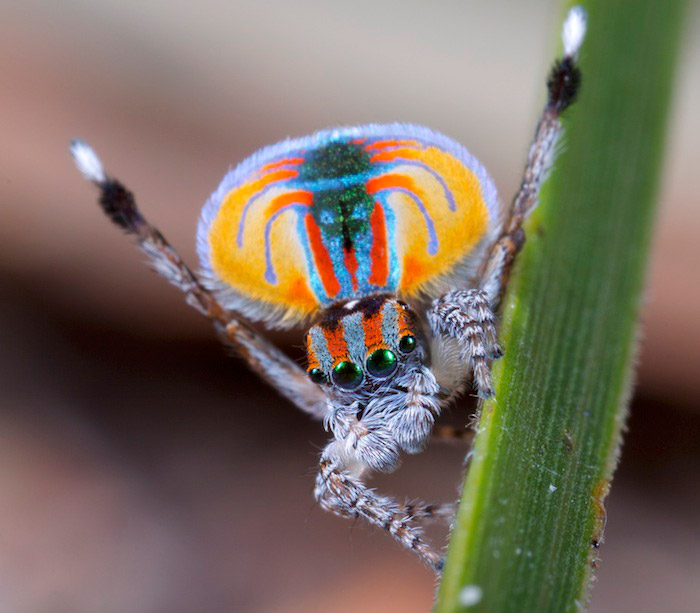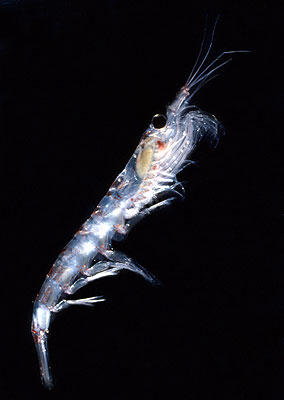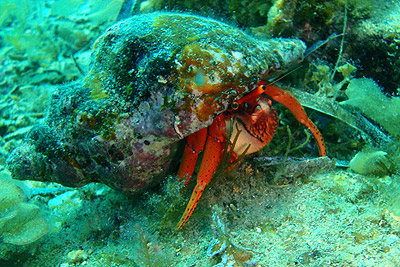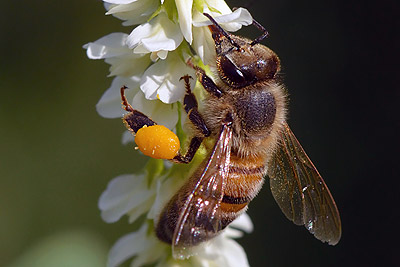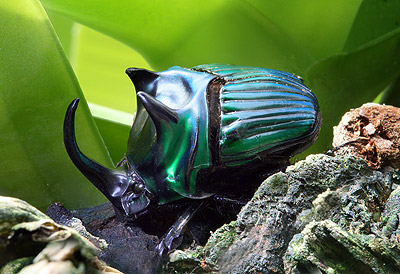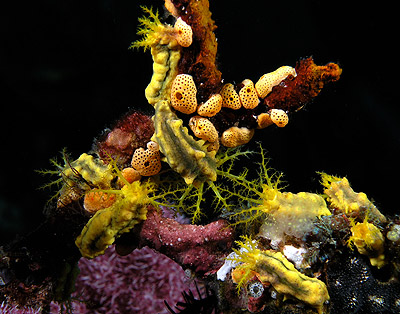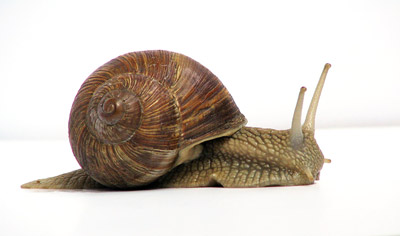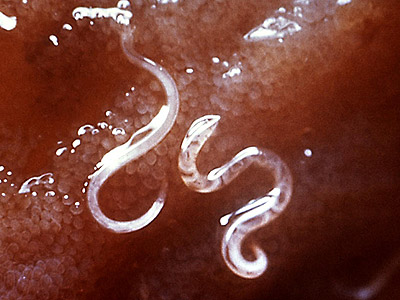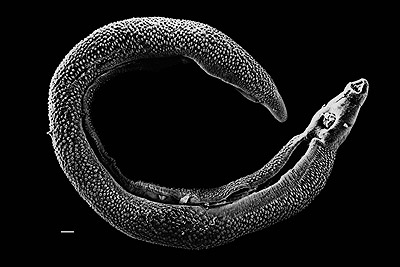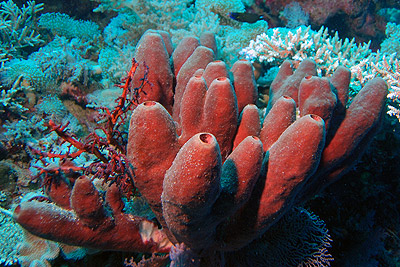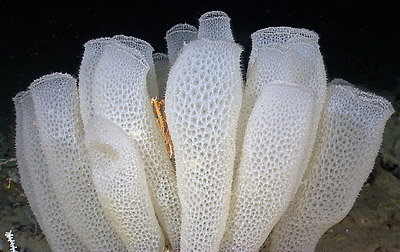Animal Groups - Invertebrates
Classifying
animals according to evolutionary connections
Animals are usually separated into two large groups, vertebrates and invertebrates. Of these the vertebrates are a natural group in that the members have a feature in common, the backbone or vertebra. The invertebrates (the name meaning that they don't have a backbone) aren't really a natural group, the only thing that they have in common is that they aren't vertebrates. It's a bit like saying that your dog (if you have one, if you haven't you can borrow mine for a bit), a worm and a tree have something in common because they are not human. It's not the best way of grouping things.
We do this because we are anthropocentric (anthropo - human), that is we give greater importance to other humans and animals that are like us. So we tend to prioritize (and prefer) animals that have four limbs, a head with two eyes, a nose, a mouth (with a jaw and teeth) and two ears, and hair or fur, though preferably without a tail.
Having said that I'm going to use this grouping because it's what people are familiar with and is widely encountered.
There are about 29 invertebrate phyla ("about" because the groupings aren't fixed and can can change according to ideas of how and whether groups are related or not) that contain various numbers of species. From the Placozoa which has one or maybe two species (one of them hasn't been seen since 1896 so the "second species" may just be an unusual example of the first) to the Arthropoda which have over a million currently known species and may turn out to five or more times that number that haven't yet been found and described.
Because of this range of variety, many of the better known invertebrate groups are actually at different levels in the hierarchy of taxa, here are some of the better known groups.
Annelidia - Annelids (Phylum) - Segmented Worms
- Vermiform (worm-like!)
- Segmented, copies of muscles, nerves and excretory structures in each segment.
- Each segment has 2 pairs of setae (hairs) used for movement, they may be developed into paddles in aquatic species.
- Hydrostatic (watery) skeleton, like filling a balloon with water gives it shape.
- Segments have longitudinal and circular muscles that contract and work against each other for movement (short and fat - long and thin - repeat)
- Have blood, a simple circulatory system, blood vessels with valves and a heart (or several hearts).
- Sexual reproduction, many species are hermaphrodite (both male and female at the same time).
- Size from 1mm to up to 3m - typically 1-20cm.
e.g earthworms, leeches, swimming marine worms.
Cnidaria - Cnidarians (Phylum)
- Stinging cells called cnidocytes or nematocysts, used to capture food
- Aquatic organisms
- Radial symmetry, central mouth
- No central nervous system (CNS) or head
- No circulatory system, heart or blood
- Some have tentacles down - free floating medusa - like jellyfish
- Some are tentacles up - fixed to a base, a sedentary polyp - like sea anemones
- Some have both medusa stages and polyp stages in their life-cycle, some only have one stage
- Usually no skeletal material though hard coral polyps build calcium carbonate structures around themselves that become massive rocky coral reefs.
- Can reproduce sexually or asexually (not all species can do both)
e.g. sea anemones, jellyfish, coral animals, both soft and hard, ctenophores.
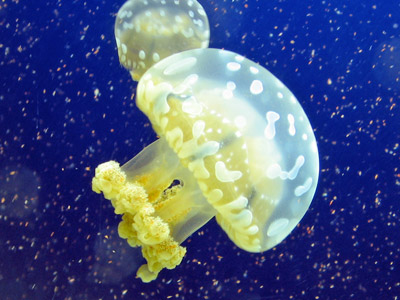
A medusoid jellyfish
picture used permission
of stefani.drew - CC Attribution ShareAlike 2.0 License
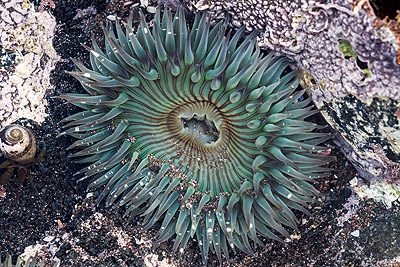
A sea anemone, a typical polypoid
Cnidarian
copyright
Tomas Castelazo / Wikimedia Commons / CC BY-SA 4.0
Cnidarians come in two basic varieties, the medusa phase (jellyfish, left) with a swimming bell trailing tentacles and settled types with outwards pointing tentacles (sea anemones, right) Another way of picturing them is hold your hand with fingers facing down and wiggle fingers = jellyfish type, Turn your hand upside down with fingers facing up and wiggle fingers = anemone type
Arthropoda - Arthropods (Phylum) - Jointed external skeletons
- Exoskeleton (like a suit of armour)
- Jointed appendages used for feeding and movement (arthro - jointed, pod - foot)
- Metamorphosis common.
- Segmented bodies, segments not always obvious.
- Bilateral symmetry (one line of symmetry down the middle - like you)
The largest phylum of all, Classes include: insects, spiders, centipedes, millipedes and crustaceans.
More on Arthropoda - Arthropods
Crustacea - Crustaceans (Subphylum within the Phylum Arthropoda)
- Two pairs of antennae - the distinguishing feature of the group.
- Well defined head in most members.
- The trunk region usually divided into abdomen and thorax.
- The trunk section is often covered by a dorsal (on the back) carapace (shell).
- There are often a number of legs (and leg-like things) that have special functions such as feeding, walking and swimming.
- The exoskeleton may be strengthened by the addition of calcium carbonate.
e.g. crabs, lobsters, shrimps, krill, woodlice, water fleas, barnacles.
More on Crustacea - Crustaceans
Crustaceans are a sub group of the Arthropods, Antarctic krill left, hermit crab, right
Insecta - Insects (Class within the Phylum Arthropoda)
- Body is divided into three parts, head,
thorax and abdomen - the distinguishing feature of insects.
- Head has one pair of antennae
- Thorax has three pairs of legs
- Abdomen has no appendages
- May have wings on the thorax, there are two pairs of wings, one pair may be modified and not used for flight.
- Mouth parts may be greatly modified for biting, chewing, piercing and sucking in different species.
- Gas exchange is by a tracheal system, with openings all along the body to the outside called spiracles.
- A tubular heart and simple circulatory system.
- Sexual reproduction with separate males and females, some can reproduce asexually as well.
e.g. beetles, flies, bugs, ants, bees, wasps, dragon flies, grasshoppers, crickets, cicadas, fleas, cockroaches, termites, butterflies and moths.
Echinodermata - Echinoderms (Phylum)
- Pentametry - 5 rayed symmetry - the distinguishing feature.
- A network of water filled channels that often end in suckered tube feet.
- Bony calcerous endoskeleton (skeleton on the inside).
- No brain, heart or eyes.
- Found in all seas, worldwide and at all depths, only marine.
- Reproduction can be sexual or asexual.
e.g. starfish/sea stars, brittle stars, sea urchins, sea cucumbers, feather stars.
More on Echinodermata - Echinoderms
Echinoderms have a unique radial symmetry with body parts often being in multiples of five.
Mollusca - Molluscs (Phylum)
- A muscular "foot" which may be very modified.
- The main body visceral mass is covered by a fold of the body called the mantle which may secrete a shell, which may be external or internal.
- There may be a radula present, a tongue-like scraping organ covered in hundreds, or thousands of microscopic teeth.
- Body divided into head, foot and visceral mass.
- No segmentation - not a characteristic as such, but helps separate the molluscs from other groups.
- Sexual reproduction.
e.g. snails, slugs, octopus, squid, mussels, clams, oysters.
The molluscs are a very varied group, left is a Gastropod, a snail, on the right is the intellectual giant of the Molluscs, an Octopus.
Nematoda - Nematodes (Phylum) - Roundworms
- Roundworms get their name as they are round in cross section.
- Long thin bodies.
- Often very small to microscopic, some parasites however may be a meter long.
- Simple tube-like gut with a mouth and anus.
- No circulatory system, gas exchange and excretion are by diffusion across the body wall
- There is very little obvious difference between species, they all look very like longer or shorter, fatter or skinnier versions of the same thing.
- Sexual reproduction, sexes separate. Males are usually smaller, some can deposit over 100,000 eggs per day.
e.g. vinegar eels, hookworms, potato root eelworm, pinworms, whipworms.
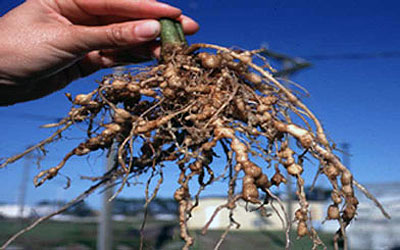
Galls (swollen regions) formed on vegetable
roots
A result of infestation by parasitic
nematodes.
Nematodes will never win any beauty competitions, especially as so many of them are parasites, left a plant parasite that has caused swollen galls to form on this vegetable root, right, a hookworm attached to a dogs intestine.
Platyhelminthes - Platyhelminths (Phylum) - Flatworms
- Bilateral symmetry (single line of symmetry, down the middle - like you).
- Soft bodied, no skeleton.
- Simple nervous system with a rudimentary brain, may have simple eyes.
- Blind gut, mouth, no anus, waste passes out the way it came in (yuck).
- No circulatory or respiratory system, diffusion for respiration means the animals have a thin, flattened body shape.
e.g. tapeworms, liver flukes, bilharzia, planaria.
More on Platyhelminthes - flatworms
Some flatworms are are parasitic, some are free living, left is the parasitic flatworm that causes the tropical disease of bilharzia, right is a free living marine flatworm.
Porifera - Poriferans (Phylum) - Sponges
- Aquatic organisms that are sessile, meaning fixed in one place.
- Multicellular with just a few cell types, the simplest kind of multicellular animals.
- Filter feed on bacteria and other organic material from the water.
- No circulatory, digestive or nervous system, no true tissues or organs.
- Some cells can move about in the sponge and can become other types of cells.
- Body shape designed to improve water flow which usually enters through pores called ostia and leaves through a chimney-like hole called the osculum.
- Reproduction can be asexual or sexual, sponges are hermaphrodite (male and female at the same time)
- Found world-wide mainly marine but there are a smaller number of freshwater species.
Sponges vary tremendously in size and color, though are usually easy to identify as sponges, their basic necessity to be filter feeders means there is little or no confusion with other animals (yes they are animals).


